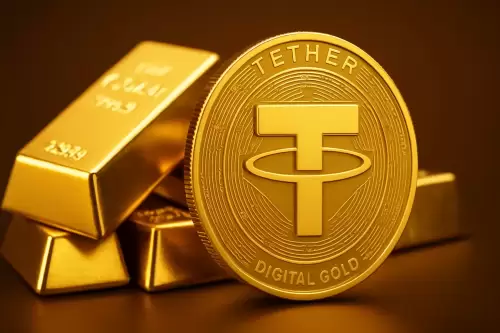 |
|
 |
|
 |
|
 |
|
 |
|
 |
|
 |
|
 |
|
 |
|
 |
|
 |
|
 |
|
 |
|
 |
|
 |
|
Cryptocurrency News Articles
The Ultimate Guide to Understanding Crypto Coins vs. Tokens
May 21, 2025 at 05:30 pm
People throw these terms around like they're the same, but how they're born, how they work, and what they mean for anyone building, investing, or just using them couldn't be more different.

To really get a grip on digital assets, you’ve got to tell apart its main players: coins and tokens. People throw these terms around like they’re the same, but how they’re born, how they work, and what they mean for anyone building, investing, or just using them couldn’t be more different.
Spotting the Key Difference: Coins vs. Tokens
Think of a crypto coin, or what many call a cryptocurrency, as the home-grown currency of its very own, standalone blockchain. Bitcoin (BTC) operates on the Bitcoin blockchain, and Ether (ETH) is native to Ethereum’s; these are classic examples. These aren’t just digital assets; they’re the fundamental building blocks of the networks they belong to.
Tokens, on the other hand, are more like digital applications built to run on blockchains that already exist. You’ll find them on platforms like Ethereum (which is famous for ERC-20 tokens), BNB Smart Chain (with its BEP-20 tokens), or Solana. Instead of constructing their own foundational layer, tokens lean on the security and operational framework of their host blockchain.
Route One: Crafting Your Own Crypto Coin (and its Native Blockchain)
If you’re dreaming of creating a coin, you’re signing up to either build a whole new blockchain from scratch or to take an existing one and fork it—both paths are serious undertakings, heavy on technical skill and resources.
The Nitty-Gritty of Building:
What This Means for Your Strategy:
Route Two: Designing a Token on an Existing Blockchain
Creating a token is often the more straightforward option, as you get to use the rails of blockchains that are already well-established.
The Nitty-Gritty of Token Making:
What This Means for Your Strategy:
When you look at what’s under the hood, a coin runs on its own custom-made blockchain, completely independent. Tokens, however, are crafted using smart contracts that live on someone else’s blockchain. This difference naturally makes building a coin a much tougher job, demanding you figure out the whole blockchain structure and how everyone agrees on transactions.
Tokens are simpler; you’re mostly just getting a smart contract up and running. Consequently, getting a coin off the ground will hit your calendar harder and hit your wallet harder than launching a token. If you go the coin route, you call all the shots on how it works, its features, and even how money flows. With a token, you play by the rules and limitations of the blockchain it’s built on.
Securing a coin means you’re on the hook for protecting the entire network. Token creators get to piggyback on the security already proven by the host blockchain. You’ve seen coins like Bitcoin (BTC), Ether (ETH), and Cardano (ADA) out in the wild. For tokens, think of things like USDT (an ERC-20), SHIB (another ERC-20), or CAKE (a BEP-20).
Key Things to Nail Before Launching Your Crypto Asset
First off, before you even think about launching a new crypto asset, ask yourself: what makes it special? In a field packed with options, your coin or token needs a truly unique reason to exist. What knotty problem does it untangle that others don’t? If it doesn’t have a solid use in the real world, it’s likely to just become another speculative blip, not something people will actually use and value long-term. Many crypto ventures fizzle out precisely because they skip this crucial step; some studies even show that more than half the cryptocurrencies born since 2021 are already dead and buried.
Then, you absolutely must get the economics—the tokenomics—right from the start, as this is the heart of your project.
Your development choices and security measures are next on the critical list.
Be realistic about the price tag for creation and launch. You’ll need to set aside money for the actual development (anywhere from $5,000 to well over $100,000), those crucial security audits, getting legal advice ($10,000 to $50,000 or more isn’t uncommon), spreading the word through marketing ($10,000 to $50,000+), and maybe even fees to get listed on exchanges (these can vary wildly, from a few thousand dollars to over a million for the biggest centralized exchanges). If you go for a decentralized exchange (DEX), you’ll have costs tied to providing liquidity.
Don’t underestimate the maze of rules and legal stuff you’ll need to get through. This includes AML/KYC (anti-money laundering/know your customer) rules like the FATF Travel Rule, laws about whether your asset is a security (like the Howey
Disclaimer:info@kdj.com
The information provided is not trading advice. kdj.com does not assume any responsibility for any investments made based on the information provided in this article. Cryptocurrencies are highly volatile and it is highly recommended that you invest with caution after thorough research!
If you believe that the content used on this website infringes your copyright, please contact us immediately (info@kdj.com) and we will delete it promptly.






























































